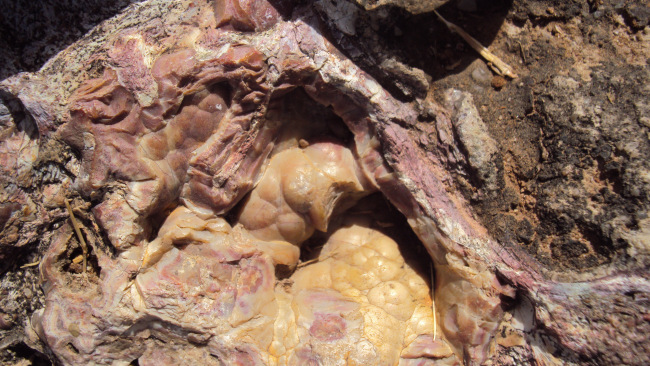The earth is estimated to be around 4.5 billion years old and the oldest fossil discovered around 3.5 billion years. The challenge of palaeontology – the study of life before the present era – is that after this huge time period completely intact fossils are rare to find. And yet, despite the big hitch, scientists have somehow managed to piece together a probable history of the planet.
As with Wadadham, any fossil site can prove serendipitous. Located on the border of Maharashtra and Andhra Pradesh, Wadadham is the only site in India where both flora and fauna fossils dating from the same period have been found, scientists told the Indian Express.
In India, fossil sites are often exposed to the risk of plunder and the churn of development. That is where the Geological Survey of India is supposed to step in. It protects many sites of paleontological importance, some of which are listed below. From India’s first dinosaur to its oldest human ancestor, these sites show an impressive range of fossils that are crucial in understanding Earth’s history.
The world’s most diverse group of animals
Zanskar Valley, Kashmir

Trilobites at Zanskar. Photo credit: Noel A Heim
Around 550 million years ago, trilobites, a species of arthropods, were possibly the most diverse animals on Earth. Going only by fossil records, around 20,000 species have already been identified. Then around 250 million years ago, most trilobites went extinct. Less than 10% of all species survived, making this the largest mass extinction we know Earth to have had. The trilobites at Zanskar Valley are similar to those found in south China and parts of Pakistan. They are also proof that at some point what we know as the Himalayas was certainly underwater.
A new sanctuary for marine fossils
Manendragarh, Chhattisgarh

A fossil at the park.
The Marine Gondwana Fossil Park is home to fossils dating back to around 280-240 million years ago. It was sanctioned funds by the state government only in August. The fossils come from a period before the Indian subcontinent broke off from the larger Gondwana supercontinent to join the Eurasian landmass in what is known as the continental drift. The park is likely to have been inundated at some point as the fossils, a variety of mosses and molluscs, are of marine fauna.
India’s first unique dinosaur species
Balasinor, Gujarat

Dinosaur fossil at Balasinor. Photo credit: Geology Freak.
The 72-acre site in Gujarat is one of the world’s largest intact dinosaur hatcheries. The dinosaurs at Balasinor, of which at least 13 separate species have been identified, lived between 200 million and 65 million years ago. (To put that into perspective, modern humans have been around for only 200,000 years.) The site is also where Rajasaurus narmadensis, the first species of dinosaur unique to India, was discovered almost entirely intact in the 1980s and identified in 2003. The Geological Survey of India has made copies of the fossil for its office in Lucknow.
Ancient trees, perfectly preserved
Thiruvakkarai, Tamil Nadu

Fossils at the National Fossil Wood Park. Photo credit: Ranjith Kumar Inbasekaran.
Around 35 km from Puducherry, the National Fossil Wood Park has a rare collection of 200 fossilised trees that have remained preserved for 20 million years. The trees are likely to have been washed inland at some point. A 100 km to the west is another smaller park of fossilised trees at Sathanur in Perambalur district, all around 100 million years old, according to the Geological Survey of India. They were conifers common to the region and were moderately tall.
India’s earliest human
Hathnora, Madhya Pradesh
A cleaver found in the Narmada Valley, photographed at Kolkata. Photo credit: Biswarup Ganguly.
This site in Madhya Pradesh has the first early hominin fossil, an ancestor of modern humans, found in the Indian subcontinent. It was discovered in 1984. Researchers are not sure which species of Homo the skull piece belongs to, though a series of possibly unrelated stone tools dating from 800,000 to 10,000 years ago indicates a long history of human presence at the site. Researchers at Hathnora have also discovered the first evidence of ostriches along the Narmada basin – a fragmented eggshell.











